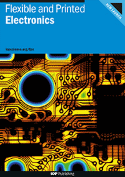
Flexible and Printed Electronics
Scope & Guideline
Exploring Innovations in Printed Materials
Introduction
Aims and Scopes
- Innovative Materials for Printed Electronics:
The journal emphasizes the development and application of novel materials, including conductive polymers, nanocomposites, and 2D materials suitable for flexible and printed electronics. - Advanced Fabrication Techniques:
Research on various printing techniques such as inkjet, screen printing, and aerosol jet printing is a core focus, with studies aimed at optimizing processes for high-quality, scalable production. - Applications in Wearable and Flexible Devices:
The journal explores applications of flexible electronics in areas such as wearable technology, biosensors, and smart packaging, highlighting their transformative impact on health monitoring and environmental sustainability. - Sustainability and Recycling:
There is a consistent focus on the sustainability of materials and processes, including recycling strategies for printed electronics, to address environmental concerns associated with electronic waste. - Characterization and Performance Optimization:
Studies on the characterization of flexible electronic devices and optimization of their performance under various mechanical and electrical conditions are critical components of the journal's scope.
Trending and Emerging
- Biocompatible and Eco-Friendly Materials:
There is an increasing focus on developing biocompatible and environmentally friendly materials, reflecting a growing awareness of sustainability in electronics fabrication. - Integration of AI and Machine Learning:
The integration of AI and machine learning techniques in the design and optimization of printed electronics is gaining traction, facilitating advanced predictive modeling and process automation. - Wearable and Health Monitoring Devices:
The trend towards wearable technology is strong, with numerous studies focusing on sensors and devices designed for health monitoring, emphasizing their role in personalized healthcare. - 3D Printing and Additive Manufacturing:
Research on 3D printing techniques for flexible electronics is emerging, showcasing the potential for complex geometries and customized functionalities in electronic devices. - Quantum Dot and Nanomaterial Applications:
The application of quantum dots and other nanomaterials in flexible electronics is a growing theme, enhancing device performance and expanding their functionalities in various applications.
Declining or Waning
- Traditional Rigid Electronics:
There has been a noticeable decline in research related to rigid electronic components, as the field shifts towards more flexible and adaptable systems that can conform to various applications. - Basic Theoretical Studies:
The journal has seen fewer publications focused solely on theoretical models without practical applications, indicating a trend towards applied research that demonstrates real-world usability. - Low-Performance Materials:
Research involving less effective or outdated materials for printed electronics is diminishing, as the focus is now on high-performance and sustainable materials that meet modern technological demands. - Conventional Energy Harvesting Techniques:
The exploration of traditional energy harvesting methods has waned in favor of novel approaches that incorporate advanced materials and innovative designs for enhanced efficiency. - Basic Sensor Technologies:
While sensor technologies remain important, there has been a decrease in publications focused on basic sensor designs, with a shift towards more complex, multifunctional sensor systems.
Similar Journals
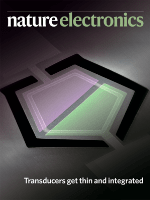
Nature Electronics
Transforming Insights into InnovationsNature Electronics is a premier journal in the field of Electrical and Electronic Engineering, published by NATURE PORTFOLIO. Established in 2018 and converging until 2024, it has swiftly positioned itself as a leading platform for groundbreaking research, holding a prestigious Q1 ranking in multiple categories including Electronic, Optical and Magnetic Materials, and Instrumentation according to the latest 2023 evaluations. The journal boasts an impressive Scopus ranking, securing the top position in Instrumentation and showcasing exceptional standings in both Electrical Engineering and Materials Science. With a commitment to disseminating high-quality research, Nature Electronics offers insightful access to the latest innovations and advancements in the electronics domain, making it an essential resource for researchers, professionals, and students alike. Engaging with this journal enables readers to stay at the forefront of technological progress and fosters discussion on the future of electronic materials and devices.

APL Materials
Unleashing potential through cutting-edge material advancements.APL Materials is a prestigious open access journal published by AIP Publishing that has been at the forefront of disseminating cutting-edge research in the fields of materials science and engineering since its inception in 2013. With an impressive impact factor reflecting its significance, APL Materials ranks securely in the Q1 quartile in both Engineering (miscellaneous) and Materials Science (miscellaneous) categories, underscoring its role as a vital resource for innovative scientific inquiry. Ranked highly in Scopus, particularly in General Engineering (24/307) and General Materials Science (78/463), the journal provides a platform for researchers, professionals, and students to share their findings and advancements that push the boundaries of material applications. Furthermore, its open access policy ensures that high-quality research is freely available to a global audience, fostering collaborative advancements in the scientific community. As the journal continues to evolve through to 2024, it remains committed to presenting groundbreaking studies that contribute to the advancement of materials science and engineering disciplines.Explore APL Materials to stay at the cutting edge of research and innovation.

Batteries & Supercaps
Leading the Charge in Electrochemical EngineeringBatteries & Supercaps is a leading international journal published by WILEY-V C H VERLAG GMBH, dedicated to the advancement of knowledge in the fields of electrical and electronic engineering, electrochemistry, and energy engineering. With a remarkable Q1 ranking in multiple relevant categories, including Electrical and Electronic Engineering, Electrochemistry, and Energy Engineering and Power Technology, this journal serves as a vital resource for researchers, professionals, and students alike who are exploring innovative solutions in energy storage and conversion technology. As the demand for more efficient storage systems continues to escalate, Batteries & Supercaps provides a platform for high-quality research articles, reviews, and technical notes that contribute to the evolution of this dynamic field. Accessible globally from Germany, the journal promises to cultivate an engaging academic discourse on battery technology and supercapacitors through insightful contributions from a diverse array of experts. Join us in shaping the future of energy solutions and explore groundbreaking findings that pave the way for sustainable innovations.
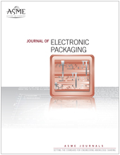
JOURNAL OF ELECTRONIC PACKAGING
Unveiling Breakthroughs in Electronic PackagingJOURNAL OF ELECTRONIC PACKAGING, published by the esteemed American Society of Mechanical Engineers (ASME), is a pivotal platform for research in the fields of Computer Science Applications, Electrical and Electronic Engineering, and Materials Science, particularly focusing on electronic packaging technologies. With an ISSN of 1043-7398 and an E-ISSN of 1528-9044, this journal has consistently showcased groundbreaking studies since its inception in 1989, projected to continue until 2025. Recognized within the Q2 quartile rankings across multiple categories in the 2023 Scopus rankings, it maintains a strong presence in the academic community with notable rankings in various engineering and materials science domains. This journal serves as a critical resource for researchers, professionals, and students who seek to advance their understanding and application of innovative electronic packaging solutions. Though it does not offer open access, it encompasses a robust array of high-quality articles that foster knowledge advancement and interdisciplinary collaboration in a rapidly evolving technological landscape, ultimately contributing to the growth and sophistication of the electronic packaging field.
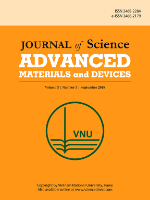
Journal of Science-Advanced Materials and Devices
Advancing Materials Science Through Open Access InnovationJournal of Science-Advanced Materials and Devices is a leading open-access journal published by Vietnam National University, dedicated to advancing the field of materials science through cutting-edge research and innovative developments. Since its inception in 2016, this journal has become a pivotal platform for sharing insights and discoveries in various subfields, including biomaterials, ceramics and composites, and electronic, optical, and magnetic materials. With impressive quartile rankings, including Q1 across multiple categories in 2023, and a notable Scopus ranking placing it in the top 15th percentile for ceramics and composites, it highlights the journal’s influence and prestige within the global academic community. Open Access since its launch, the journal aims to facilitate unrestricted dissemination of scholarly work, empowering researchers, professionals, and students to engage with the latest advancements. The Journal of Science-Advanced Materials and Devices is vital for those seeking high-quality contributions that influence both theoretical understanding and practical applications in the ever-evolving landscape of materials science.
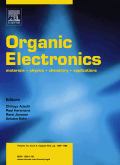
ORGANIC ELECTRONICS
Shaping Tomorrow's Technology Through Organic InnovationORGANIC ELECTRONICS, published by Elsevier, is a premier journal dedicated to the rapidly evolving field of organic electronics, encompassing a spectrum of interdisciplinary research from materials chemistry to electrical engineering. As a crucial resource for researchers, professionals, and students, the journal boasts significant impact, currently ranked in the Q2 category across multiple fields, including Condensed Matter Physics, Materials Chemistry, and Electrical and Electronic Engineering. With a commitment to advancing knowledge and innovation from its base in the Netherlands since its inception in 2000, ORGANIC ELECTRONICS not only provides critical insights into organic materials and their applications but also fosters collaboration among scientists through its comprehensive findings and high-quality articles. The journal does not currently offer open access but provides various access options for subscribers. With its HIndex signaling substantial academic output and engagement, ORGANIC ELECTRONICS remains an essential platform for groundbreaking research that is shaping the future of technology.

JOURNAL OF ELECTRONIC MATERIALS
Unveiling the Future of Materials ScienceWelcome to the Journal of Electronic Materials, a premier publication in the field of materials science. Published by Springer, this esteemed journal has been a beacon for groundbreaking research in electronic, optical, and magnetic materials since its inception in 1972. As an established resource, it boasts a commendable impact factor and categorically ranks in the second quartile (Q2) in key areas such as Condensed Matter Physics and Electrical and Electronic Engineering, as well as holding a respectable third quartile ranking in fields related to Electronic, Optical, and Magnetic Materials and Materials Chemistry. Researchers, professionals, and students can access a wealth of knowledge as we publish original articles, reviews, and cutting-edge research that push the boundaries of science and technology in these critical fields. Stay informed and engaged as we explore advancements that shape the future of electronic materials.

Nano Materials Science
Connecting Researchers with Cutting-edge Discoveries.Nano Materials Science is a premier open-access journal dedicated to the dissemination of groundbreaking research in the fields of nanotechnology, materials science, and chemical engineering. Published by KEAI PUBLISHING LTD, this journal has quickly established itself as a leading platform in its area since its inception in 2019, with impressive rankings in the Scopus database, holding a Q1 position across multiple categories, including Chemical Engineering and Materials Science. Based in Beijing, China, Nano Materials Science provides researchers and practitioners access to a wealth of high-quality peer-reviewed articles, fostering innovation and collaboration within the scientific community. With its impact factor steadily rising and a commitment to open access, the journal aims to bridge the gap between theoretical research and practical applications, making it an essential resource for professionals and students eager to stay at the forefront of materials research and nanotechnology advancements.

npj Flexible Electronics
Transforming the World with Flexible Technologiesnpj Flexible Electronics, published by NATURE PORTFOLIO, is a premier open-access journal dedicated to the rapidly advancing field of flexible electronics. Since its inception in 2017, the journal has gained significant recognition, boasting impressive rankings as a Q1 journal in both Electrical and Electronic Engineering and Materials Science based on the 2023 metrics. With its E-ISSN 2397-4621, the journal serves as an essential platform for researchers, professionals, and students alike, facilitating the dissemination of high-quality research articles, reviews, and insights that drive innovation across multidisciplinary applications. Operating from its base in Berlin, Germany, and characterized by a robust impact within the academic community, npj Flexible Electronics plays a critical role in shaping the future of electronic materials and devices. The journal offers comprehensive open access options, ensuring that cutting-edge research is readily available and widely disseminated, fostering collaboration and engagement within the global research community.

INFORMACIJE MIDEM-JOURNAL OF MICROELECTRONICS ELECTRONIC COMPONENTS AND MATERIALS
Empowering Knowledge in Electronic Components and MaterialsINFORMACIJE MIDEM - JOURNAL OF MICROELECTRONICS ELECTRONIC COMPONENTS AND MATERIALS is a prominent open-access journal published by SOC MICROELECTRONICS, ELECTRON COMPONENTS MATERIALS-MIDEM in Slovenia, dedicated to advancing knowledge in the fields of microelectronics, electronic components, and materials. Since its inception in 1988, the journal has provided a platform for groundbreaking research and innovations, ensuring that all published work is freely accessible to a global audience. With an impressive history of publication from 1996 to 2024, INFORMACIJE MIDEM is indexed in Scopus, holding respectable ranks in categories such as Electrical and Electronic Engineering (Rank #525/797, Percentile 34th) and Electronic, Optical, and Magnetic Materials (Rank #204/284, Percentile 28th). While currently classified in the Q4 quartile for the year 2023, the journal serves as an essential resource for researchers, professionals, and students seeking the latest developments in microelectronics and related fields, fostering a collaborative academic environment and contributing to the advancement of technology and materials science.